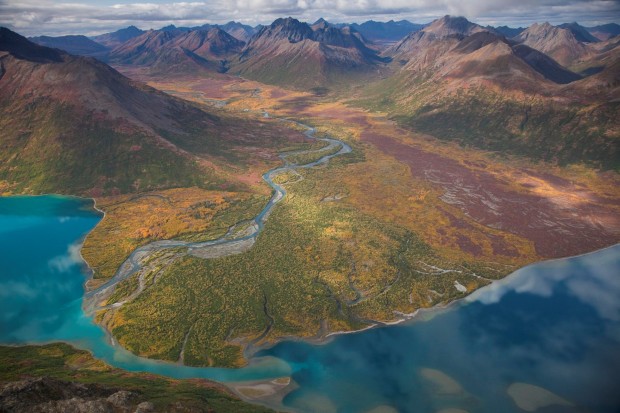We have much more to do and your continued support is needed now more than ever.
You Are Making a Difference for Wild Salmon and Wild Places
Salmon are amazing creatures. They are born in fresh water, migrate many miles to the ocean where they spend most of their life, and then return to the stream they were born to start the cycle of life over again. When salmon spawn and die, they provide marine derived nutrients to the entire watershed, which benefits insects, fish, mammals, and even the riparian vegetation.

Thankfully, there are still places in the United States where wild salmon remain strong and vibrant. Bristol Bay, Alaska, is home to the world’s largest sockeye salmon run, as well as strong wild runs of king, silver and chum salmon.
These wild runs support sustainable recreational, commercial and Native American fisheries, which provide more than 12,000 sustainable jobs annually. Bristol Bay’s amazing sport fishing attracts anglers from around the globe.
Saving Bristol Bay’s iconic salmon runs
The proposed Pebble Mine, if allowed, would be the world’s largest copper and gold mine, and it would be built in the headwaters of the rivers that flow into Bristol Bay. National Wildlife Federation, working with many other groups and businesses, including NWF’s Alaska affiliate Renewable Resources Coalition, has been in staunch opposition to the Pebble Mine for many years. Over the past four years, hundreds of thousands of folks just like you wrote to the EPA asking them to take action to protect Bristol Bay. In response, the EPA conducted an exhaustive watershed assessment of large-scale mining in the area and concluded there is ample reason to believe Pebble Mine would likely have significant and irreversible negative impacts on the watershed, salmon runs, and fisheries.

This process involves a public comment period, and it’s vital that you stay engaged. At the end of the 404(c) process,EPA could prohibit or restrict mining activities to avoid unacceptable adverse effects on fishery areas. This isn’t the end of the fight, but it is a huge step in the right direction. A direction that could mean the end of Pebble Mine and salvation for Bristol Bay’s wild salmon runs and the many animals and humans that depend on those runs for survival.
You’ve done amazing things so far, and as we near the finish line, please continue to speak up in support of Bristol Bay salmon and in opposition to the proposed Pebble Mine.
![]() Urge the EPA to protect our nation’s waters and wildlife from toxic mine pollution.
Urge the EPA to protect our nation’s waters and wildlife from toxic mine pollution.




















